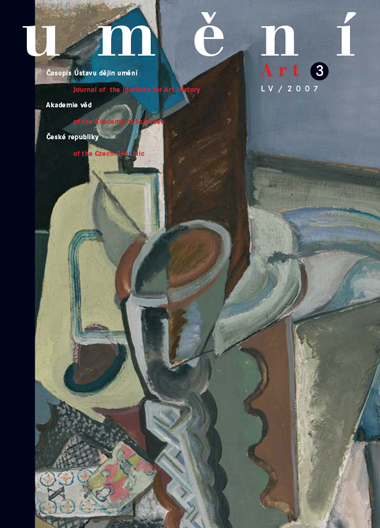Lubomír Slavíček
Michael Willmann und Christoph Wenzel Nostitz
One of the many important patrons of Michael Willmann (1630-1706) was Count Christoph Wenzel Nostitz (1643-1712), member of a venerable Lusatian-Silesian family. His first contacts with the artist most probably date back to March 1682, when the count commissioned, according to one entry in his diary, 'eine und andere Arbeith'. Light has recently been shed on the subject of this commission, and on other of the results of Nostitz's contact with the painter by a number of heretofore unpublished sources in the family archive of the Rokytnice-Planá branch of the Nostitz family (Pilsen State Regional Archive, Nepomuk Branch). The contract signed on 11 March 1682 and the subsequent receipt (Appendix I) bear witness to the fact that Count Nostitz commissioned paintings portraying scenes from the Passion of Christ for the castle chapel at his main residence at Luboradz (Lobris), partly housed today at the Muzeum Narodowe in Wrocław. A letter by Willmann dating from April 1703 (Appendix II) confirms, as do a set of receipts issued by the painter the following year (Appendices III-V), that Nostitz's interest in the painter's new works was not limited to the 1680s. The old painter, despite references to his advanced age, supplied Nostitz with several new works between 1703 and 1704: in addition to Adorations of the Kings, a genre painting depicting dancing peasants ('Paueren tantz') and three paintings on otherwise singular mythological themes. In one of them, Heracles is represented and others draw from the unspecified stories of Ovid's Metamorphoses. Furthermore, information on the delivery of two 'Ovidian pieces' in November 1704, for which the buyer payed the elevated sum of 100 gold coins (guilders), warrant the hypothesis that one of the pair is, with all probability, Willmann's superb painting Rescue of Andromeda (National Gallery in Prague), heretofore dated to around 1695 or, more recently, to roughly following the year 1682.
Full-text in the Digital Library of the Czech Academy of Sciences:
https://kramerius.lib.cas.cz/uuid/uuid:674fdaf6-d6c0-412b-bdbe-9d9db36b2a78
< back

